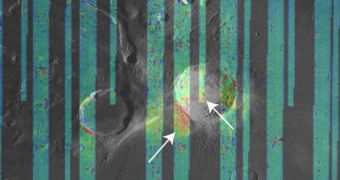The images and datasets sent back by the NASA Lunar Reconnaissance Orbiter (LRO) show that the Moon is in fact a lot more complex from a geological standpoint than anyone first thought.
This has prompted experts to call for a continuation of these investigations, in the hopes that one day the lunar mystery will be untangled.
In the September 17 issue of the esteemed journal Science, experts published two research paper, which rely on data collected by the LRO to draw a clearer picture of the Moon's geology.
Readings collected by the Diviner Lunar Radiometer Experiment aboard the orbiter were the most widely used. The spacecraft orbits the Moon at an altitude of about 31 miles (50 kilometers).
According to the two new investigations, it would appear that five different areas on the surface of the Moon revealed surprisingly-high concentrations of the silicon-oxygen compound silica.
The measurements also revealed that compositional differences exist in the Moon's crustal highlands, variations that have never been observed before.
Diviner is especially adept at conducting this type of investigations, because it can produce infrared datasets of the lunar surface and its composition with an exquisite level of detail.
This is the first time that such a complex map of the Moon's composition is being produced, and some researchers are dumbfounded at the results.
“The detection of silicic minerals at these locations is a significant finding because they occur in areas previously shown to exhibit anomalously high abundances of the element thorium, a proxy for highly evolved lithologies,” says David Paige.
He is the principal investigator of the LRO Diviner instrument, and also a professor of planetary science at the University of California in Los Angeles (UCLA). The expert was a coauthor of the new studies.
“The silicic features we've found on the moon are fundamentally different from the more typical basaltic mare and anorthositic highlands,” says the lead author of one of the Science paper, Timothy Glotch.
“The fact that we see this composition in multiple geologic settings suggests that there may have been multiple processes producing these rocks,” adds the expert, who holds an appointment as an assistant professor of geosciences at Stony Brook University, in New York.
“The new Diviner data will help in selecting the appropriate landing sites for future missions to return samples from SPA,” adds Benjamin Greenhagen. The SPA (South Pole Aitken Basin) is the largest, oldest and deepest impact crater on the Moon.
“We want to use these samples to date the SPA-forming impact and potentially study the lunar mantle, so it's important to use Diviner data to identify areas with minimal mixing,” adds the scientist.
He is a scientist at the NASA Jet Propulsion Laboratory (JPL). The expert earned his PhD at UCLA under the guidance of David Paige.

 14 DAY TRIAL //
14 DAY TRIAL //